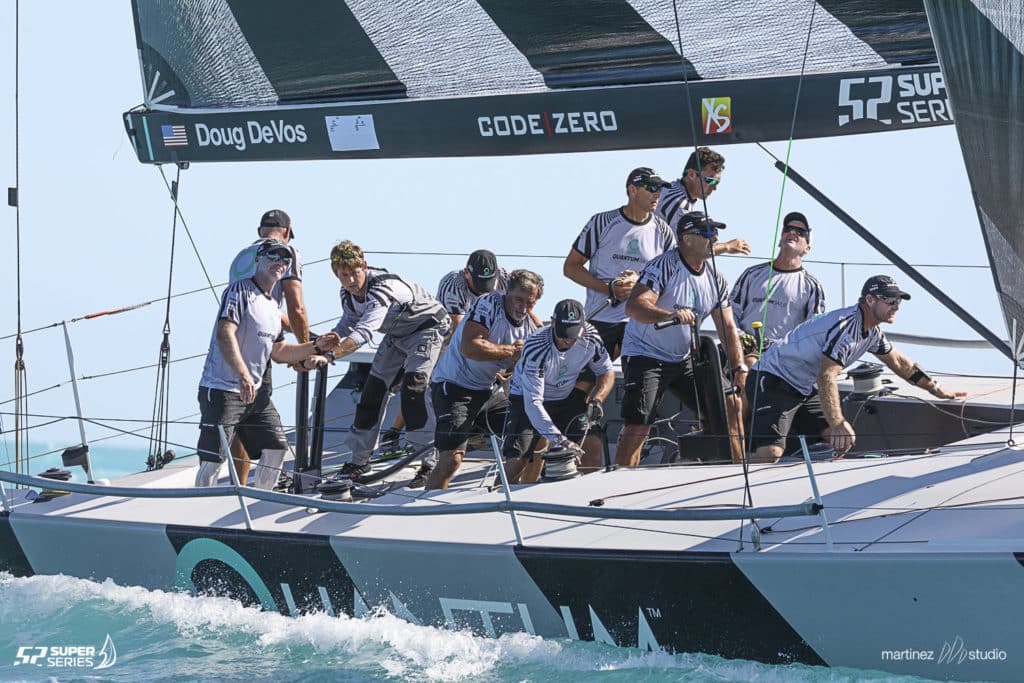
Crew integration is one of the toughest challenges, especially in classes that allow a mix of amateurs and pros. The goal is to create a team dynamic that allows the team to develop with the right amount of pushing. It’s equally important to remember that while every amateur wants to win, keeping it fun, and racing at a high level is not easy. It takes commitment from all involved. I’m a big believer in the concept that we don’t win events with the pros—we win with the amateurs. Below are tips that I believe apply in any team dynamic.
1. Commitment to the process of teaching and learning.
It is unrealistic to expect a team member with a regular job to get on a boat and do everything exactly right the first time. As we rotate team members in and out we first help the person identify the three priorities of their job for each maneuver, focusing on keeping it simple. A boat-handling playbook is handy. Any information that can be provided before the first sail is a gain as well as a good reminder to each team member of their respective role. The team needs to have people that can teach and communicate the correct process on board of how to handle the boat.
2. Communication.
Follows the same theme above, but in the heat of the moment there won’t be time to communicate what’s required, so being proactive with the coms about “what’s next” and making sure that everybody is dialed in allows for smooth execution. Remember sailing is a learned sport and everybody does things slightly different. If a team member is good enough to be part of your team, then you also need to provide an environment in which they can succeed. This requires flexibility on both parts, but also clear leadership from the pros to help the boat execute each maneuver.
3. Practice and managing expectations.
Is it reasonable to expect to win if you don’t practice? No. Plain and simple. If the expectation is to win, then practice will be required. When putting together a mixed team of amateurs and pros, don’t have a lot of rotation in the intense boat handling positions. Onboard Barking Mad we sailed with the same pit girl for 10 years. Linda Lindquist was awesome and was given the most flexibility with scheduling because we knew she would always deliver. It would, however, be unreasonable to put a different pit person in every regatta and expect the sails to go up and down perfectly. High expectations are good to have, but managing the expectation to meet the time commitment is key.
Click here to read more tips from Terry Hutchinson.









